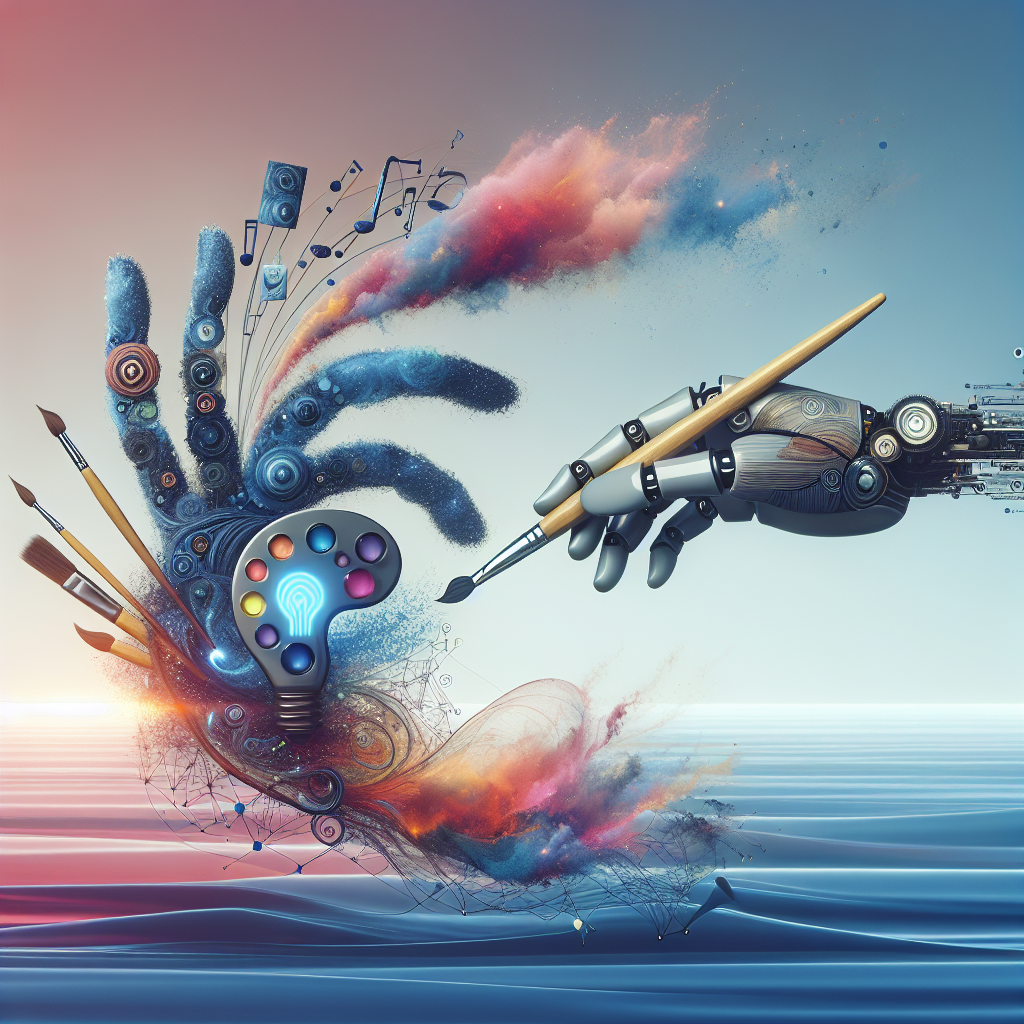In recent years, artificial intelligence (AI) has made significant advancements in various fields, from healthcare to finance to transportation. One area where AI is increasingly being used is in the realm of creativity. While traditionally thought of as a uniquely human trait, AI is now being used to generate art, music, literature, and even design. This has sparked a debate about the role of AI in creativity and the potential implications for the future of human creativity.
Exploring the Possibilities
One of the most exciting possibilities of AI in creativity is the ability to generate new and innovative ideas. AI algorithms can analyze vast amounts of data and identify patterns and trends that humans may not be able to see. This can lead to the creation of new artwork, music, or literature that pushes the boundaries of what is possible.
For example, AI can generate music by analyzing existing songs and creating new compositions based on the patterns it identifies. This has led to the creation of music that is both innovative and familiar, appealing to a wide audience. Similarly, AI can generate art by analyzing existing artworks and creating new pieces that incorporate elements of different styles and techniques.
Another exciting possibility of AI in creativity is the ability to collaborate with human creators. AI can be used as a tool to assist artists, musicians, and designers in their creative process, helping them to generate ideas, refine their work, and explore new possibilities. This can lead to new forms of collaboration between humans and machines, with each bringing their own unique skills and perspectives to the creative process.
AI can also be used to personalize creative content for individual users. For example, AI algorithms can analyze a user’s preferences and behavior to create customized music playlists, recommend books or movies, or even generate personalized artwork. This can lead to a more engaging and immersive experience for users, as they are presented with content that is specifically tailored to their interests and tastes.
However, while the possibilities of AI in creativity are exciting, there are also some concerns and challenges that need to be addressed. One of the main concerns is the potential for AI to replace human creativity entirely. Some critics argue that AI-generated art, music, and literature lack the emotional depth and soul that is inherent in human-created work. They worry that the proliferation of AI-generated content could lead to a homogenization of creativity, with everything looking and sounding the same.
Another concern is the potential for AI to perpetuate biases and stereotypes in creative content. AI algorithms are trained on existing data, which can contain biases and prejudices. This can lead to the creation of content that reinforces existing stereotypes or excludes certain groups of people. For example, AI algorithms have been found to produce racist and sexist language when generating text based on biased training data.
Despite these concerns, many experts believe that AI has the potential to enhance human creativity rather than replace it. By using AI as a tool to assist and augment the creative process, humans can explore new ideas, experiment with different styles, and push the boundaries of what is possible. AI can help artists, musicians, and designers to break out of creative ruts, overcome creative blocks, and discover new sources of inspiration.
FAQs
Q: Can AI really be creative?
A: While AI is not capable of experiencing emotions or consciousness in the way that humans do, it can be programmed to generate creative content based on patterns and trends in data. AI can produce music, art, literature, and design that is innovative and novel, pushing the boundaries of what is possible.
Q: Will AI replace human creativity?
A: While AI has the potential to enhance human creativity, many experts believe that it is unlikely to replace it entirely. Human creativity is a complex and multifaceted process that involves emotions, intuition, and personal experiences, which are difficult to replicate with AI algorithms. Instead, AI is more likely to be used as a tool to assist and augment human creativity.
Q: How can AI be used in creativity?
A: AI can be used in creativity in a variety of ways, including generating new ideas, collaborating with human creators, personalizing creative content, and assisting in the creative process. AI algorithms can analyze data, identify patterns and trends, and generate new content that is innovative and engaging.
Q: What are the concerns about AI in creativity?
A: Some of the concerns about AI in creativity include the potential for AI to replace human creativity, perpetuate biases and stereotypes in creative content, and lack the emotional depth and soul that is inherent in human-created work. It is important to address these concerns and ensure that AI is used responsibly and ethically in the creative process.
In conclusion, AI has the potential to revolutionize the creative process by generating new ideas, collaborating with human creators, personalizing content, and enhancing human creativity. While there are concerns about the implications of AI in creativity, it is important to explore the possibilities and potential benefits that AI can bring to the creative process. By using AI as a tool to assist and augment human creativity, we can push the boundaries of what is possible and create new forms of art, music, literature, and design that inspire and engage audiences around the world.

